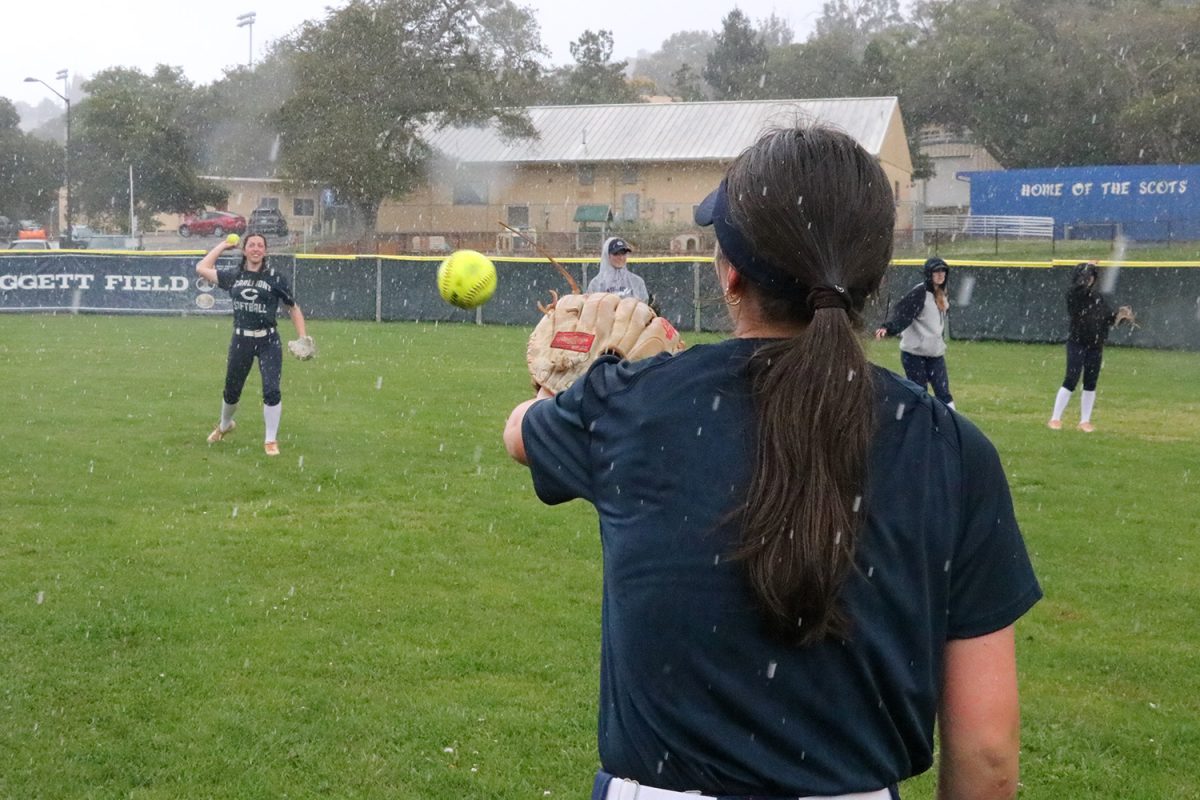A young girl eagerly waits for her first day of kindergarten to arrive. She vividly imagines television-like scenarios of how her first day of school would play out. Her school supplies were purchased and ready to use, anticipating that she will be using them inside a classroom with her future classmates. However, a week before the projected first day of school, her family receives the news that this would no longer become a reality. She frowns as her mother tells her the devastating news.
Sara Shayesteh, the AP Biology teacher at Carlmont, experienced a similar scenario with her daughter. Shayesteh recalls that her daughter, who started kindergarten this school year, was ecstatic at the idea of attending school for the first time. However, her daughter was disappointed when Shayesteh explained the current circumstances of school due to COVID-19.
“It was very confusing to explain to my daughter why she was not able to go to school physically, and I think she also felt like she was being punished by not being allowed to go to school. I tried to explain to her that it is unsafe to go to school because of COVID-19, but she doesn’t quite know what that means,” Shayesteh said.
Shayesteh is relieved that distance learning was called into order, as this would keep the spread of COVID-19 to a minimum. However, she also mentions the difficulties that her daughter has had with focusing for an excessive amount of time.
“My daughter tells me every day that she doesn’t like sitting in front of a computer for so long. She attends school from 8:30 a.m. to 2:30 p.m. with three breaks in between. For a five-year-old, that is a big stretch of time in front of a computer no matter how engaged they are,” Shayesteh said.
Another concern she had was regarding the social aspect, which has been a vital component of attending school.
“When you go to school, making friends is a part of the experience,” Shayesteh said. “Especially at her age, that is where you start to make friends and start to build relationships that might last the entire time you are in elementary school and even beyond.”
Damien Mar Chong, a father of a second-grader and a kindergartener, has worked from home for the past six months in order to take care of them. When receiving the news that this upcoming school year would be virtual, his concerns were similar to Shayesteh’s.
“I suspect the biggest challenge for the kids is the social aspect of it. Little kids learn by social interaction, so I think that is definitely a challenge for them to not have that,” Mar Chong said.
Due to his daughter’s young age, Mar Chong also suspected that technological challenges would arise amidst distance learning. To combat this, he and his wife prepared their daughter over the summer for the upcoming virtual school year.
“Even just using a mouse or knowing how to click around, we were expecting some issues. One thing that we did to prepare our daughter was to get an economical Chromebook to get her used to a computer,” Mar Chong said.
Despite the preparations, Mar Chong expresses the difficulties that persist.
“It is still an adjustment period. Six months ago she was learning to take pencil and paper, so it is still difficult for her to navigate fluidly between apps and whatnot,” Mar Chong said.
Aside from the students, Mar Chong also explains the adjustments that parents must make to accommodate the current circumstances. With limited teaching abilities from the teachers, parents must dedicate extra time and patience to provide their kids with the necessary support.
“For parents, the most difficult part is how we devote enough time and patience to help them figure things out. You know, I am not a teacher, so it is a learning experience for me too. Even after six months, it is still about trying to be flexible with the kids,” Mar Chong said.
Kortney Kaa, a fifth-grade teacher at Fox Elementary School, emphasizes the importance of parent support and communication with their child during distance learning.
“We certainly don’t want parents doing their kids’ school work for them. Instead, we want parents to communicate with their children about what they are learning. For example, listen to your child read and talk about what ideas are growing about the reading,” Kaa said.
According to Kaa, this method of communication stimulates academic engagement and growth within students.
Parent support, however, is not the most prominent issue amongst Kaa’s students. For her, the most challenging aspect of distance learning is holding her students accountable to attend their classes on time.
“Kids remembering times to be back in class is definitely a challenge and super frustrating. You can’t get mad at them, but you still have to hold these expectations for their responsibilities,” Kaa said. “It’s tough cause you’re almost expecting them to be a highschool kid overnight, and they just aren’t, so you need to guide them through it. That’s kind of the teaching part.”
Despite the adversities that distance learning has caused, Kaa recognizes that students are now much more appreciative of their education.
“The situation has forced the students to realize that school isn’t all that bad. A lot of them were ready and excited to come back to school, regardless of how, so to get them to appreciate school has probably been the best for me to witness,” Kaa said.













